A Comprehensive Guide to Competitor Analysis and Dynamic Pricing for Vacation Rentals in Brunswick County
- Stages of competitor analysis
- Analyze Pricing Strategies
- Assess Occupancy Rates
- Analyzing guest reviews
- Powerful Tips for Maximizing Profits in Short-Term Rentals
In the vibrant seaside paradise of Brunswick County, where vacationers flock year-round to enjoy sun-soaked days and breathtaking ocean views, the short-term rental market is fiercely competitive. As a seasoned real estate expert with an unwavering passion for unlocking the secrets of market success, I embarked on a comprehensive journey to delve into the world of competitor analysis with dynamic pricing for short-term rentals in this idyllic destination. With years of practical experience and a deep understanding of market dynamics, I set out to unravel the strategies employed by the key players in Brunswick County's vacation rental market. In this article, I invite you to join me on this enlightening exploration, where we unveil the strategies that can propel property owners to the forefront of this thriving industry.
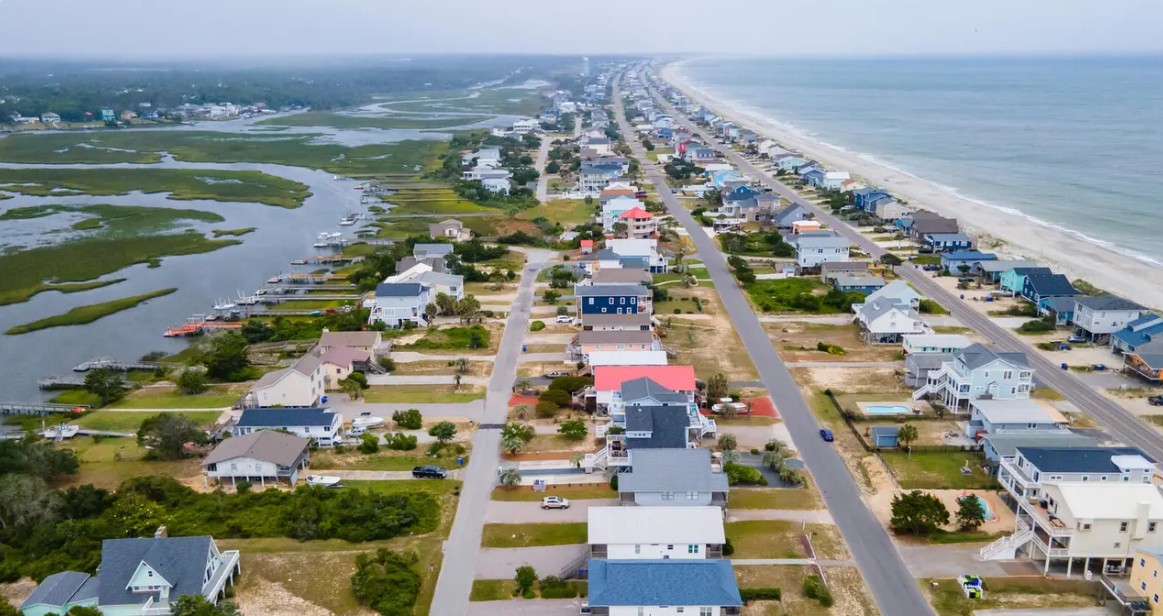
The allure of Brunswick County's pristine shores and the allure of lucrative rental income have drawn an abundance of property owners seeking to capitalize on this coastal haven's popularity. However, in such a competitive landscape, simply offering a beautiful property is no longer enough. To truly excel and stand out among the sea of options, it is imperative to have a comprehensive understanding of the market and your competitors. This is precisely why I undertook an in-depth analysis of the key players in Brunswick County's short-term rental market.
As a trusted real estate expert, I recognize that mastering the art of competitor analysis is an indispensable skill for any property owner aspiring to achieve unparalleled success. By uncovering the strategies employed by our rivals, we gain invaluable insights into their pricing models, occupancy rates, guest experience, and unique selling points. Armed with this knowledge, we can make informed decisions, refine our own pricing strategies, and optimize the guest experience to surpass the expectations of our discerning clientele.
In this article, I will guide you through the intricacies of competitor analysis with dynamic pricing for short-term rentals in Brunswick County. Together, we will explore the key steps and considerations involved in analyzing our competitors, uncovering their strengths and weaknesses, and ultimately leveraging this knowledge to gain a competitive edge. Whether you are a seasoned property owner or embarking on your first venture into the short-term rental market, the insights shared within these pages will equip you with the tools and knowledge needed to navigate the bustling market of Brunswick County with confidence and finesse.
Join me as we dive deep into the captivating world of competitor analysis, where we will unlock the secrets of market success and empower you to achieve exceptional results in Brunswick County's short-term rental market. Get ready to embark on a transformative journey that will elevate your understanding and propel your property to new heights of profitability and guest satisfaction.
Please note that competitor analysis must be an ongoing process, as market dynamics and competitors' strategies may change over time. The data presented in this article is based on the current analysis and is subject to change. It is recommended to regularly monitor the market and adapt your strategies accordingly.

Stages of competitor analysis
Step 1. Identify Key Competitors
To begin the competitor analysis process, it is crucial to identify the key competitors in your target market. These competitors can be both direct and indirect, representing properties and accommodation options that are similar to yours or cater to a similar audience. Here's how you can effectively identify your competitors:
-
Research local market, conduct thorough research of your local vacation rental market. Explore popular platforms like Airbnb, VRBO, or local vacation rental websites to find properties that offer similar accommodations and target a similar audience.
-
Identify properties in your area that closely match your property type, size, location, and amenities. These properties are your direct competitors and can provide valuable insights into pricing strategies, occupancy rates, and guest reviews.
-
Don't limit your analysis to just vacation rentals. Consider other accommodation alternatives that your target audience might choose, such as hotels, bed and breakfasts, or resorts. These indirect competitors can give you a broader perspective on the overall market landscape.
-
Check online reviews and ratings. Pay attention to guest reviews and ratings for your identified competitors. Analyze the strengths and weaknesses mentioned in the reviews to understand what guests value and what areas need improvement. This can help you identify opportunities to differentiate your property and enhance the guest experience.
Remember, it is important to respect the privacy and confidentiality of your competitors. In this article, we refer to competitors as Competitor 1, Competitor 2, etc., to ensure anonymity and maintain a fair analysis process. By identifying your key competitors, you can lay a solid foundation for the subsequent steps of the competitor analysis in dynamic pricing for short-term rentals.
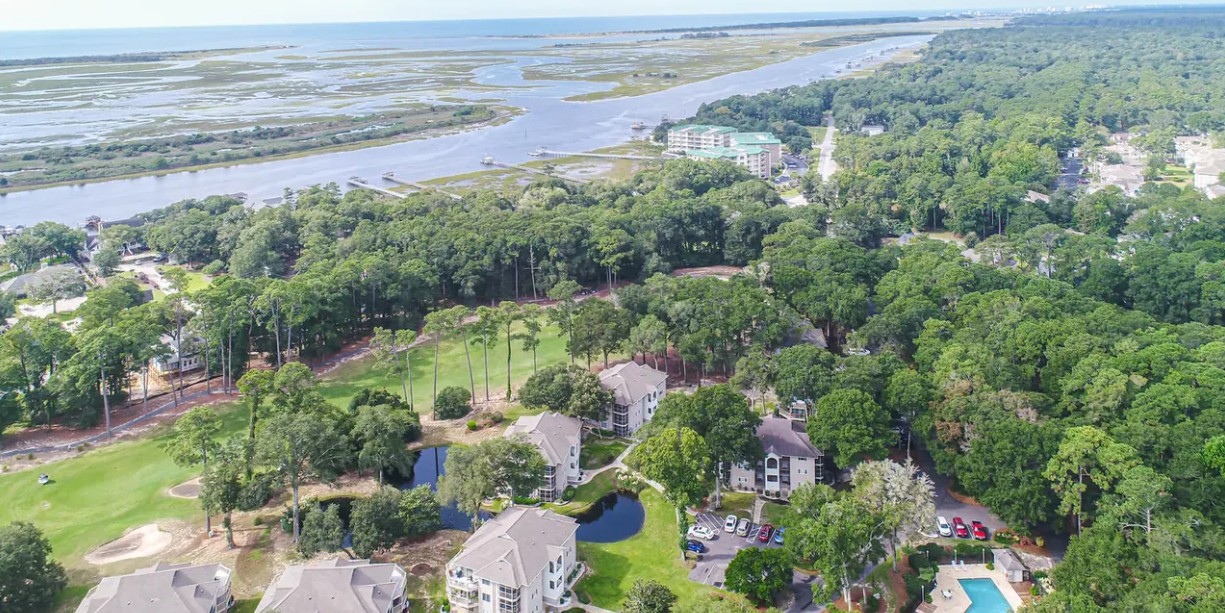
Step 2. Gather Data
To conduct a comprehensive competitor analysis, we collected data about each competitor and filled in the following tables.
Table 1. Competitor Analysis Overview
This table provides an overview of the identified competitors in Brunswick County vacation rental market. It presents key information about each competitor, such as the number of properties, property types, and locations. The purpose of this table is to compare the scale and scope of the competitors and gain insights into their market presence.
| Competitor | Number of Properties | Property Types | Locations |
|---|---|---|---|
| Competitor 1 | 20 | Apartments, Houses, Cottages | Beachfront, Downtown, Coastal Areas |
| Competitor 2 | 15 | Houses, Villas, Condos | Oceanfront, Resort Areas |
| Competitor 3 | 10 | Cottages, Cabins, Chalets | Wooded Areas, Scenic Locations |
Table 1 provides an overview of the identified competitors in the Brunswick County vacation rental market. The table showcases essential information about each competitor, including the number of properties they own, the types of accommodations they offer (such as apartments, houses, cottages, etc.), and the diverse locations where their properties are situated. These locations encompass beachfront, downtown, coastal areas, oceanfront, resort areas, wooded areas, and scenic locations throughout Brunswick County.
Analyze Pricing Strategies
This table presents an analysis of the pricing strategies employed by the competitors in the Brunswick County vacation rental market. It highlights the different pricing models, seasonal rates, and any discounts or promotions offered. By examining the pricing strategies of competitors, property owners can gain insights into market trends and pricing dynamics.
| Competitor | Pricing Model | Seasonal Rates | Discounts/Promotions |
|---|---|---|---|
| Competitor 1 | Dynamic Pricing | $150-$300 per night (peak) | 10% off for week-long stays |
| Competitor 2 | Fixed Pricing | $200 per night (throughout) | 15% off for early bookings |
| Competitor 3 | Tiered Pricing | $180-$250 per night (summer) | 20% off for extended stays |
Table 2 provides an analysis of the pricing strategies employed by the competitors in the Brunswick County vacation rental market. The table showcases the pricing models utilized by each competitor, such as dynamic pricing, fixed pricing, or tiered pricing. It also highlights their seasonal rates, indicating whether they charge higher rates during peak seasons or maintain flat rates throughout the year. Additionally, the table mentions any discounts or promotions offered by the competitors, including early bird discounts, last-minute deals, weekly discounts, seasonal promotions, extended stay discounts, and holiday offers. This information allows property owners to assess and compare the pricing strategies of their competitors, helping them make informed decisions regarding their own pricing approach.
Practical Advice for Analyzing Pricing Strategies
- Analyze the pricing strategies of your competitors to identify patterns and trends. Take note of any price fluctuations during peak and off-peak seasons, as well as differences in pricing between weekdays and weekends. This analysis can help you determine the optimal pricing structure for your own property.
- Set competitive rates. Compare your property's features, amenities, and location to those of your competitors. Based on this assessment, determine whether your rates should align with the market average or position your property as a premium or budget option. Consider adjusting your rates based on factors such as seasonality, demand, and any unique selling points your property offers.
- Utilize dynamic pricing. Use the pricing data from competitors to inform your own dynamic pricing strategy. Monitor the market closely and be responsive to changes, ensuring that your rates remain competitive and attractive to potential guests. To delve deeper into the world of dynamic pricing, I invite you to explore the comprehensive article "Mastering Dynamic Pricing: Unlocking the Secrets to Boost Your Short-Term Rental Profits." In this insightful piece, you'll discover invaluable strategies, expert insights, and practical tips to optimize your pricing strategies and maximize your short-term rental earnings.
- Offer competitive discounts and promotions. Take note of any discounts or promotions offered by your competitors. Consider creating your own special offers to incentivize bookings during low-demand periods or to attract longer-stay guests. Carefully evaluate the impact of discounts on your profitability while maintaining competitiveness within the market.
- Use your pricing data to highlight the value and benefits guests will receive by choosing your property. Emphasize any unique features, amenities, or personalized services that set your property apart from competitors. Clearly communicate the value proposition to potential guests through your property descriptions, marketing materials, and online listings.
By utilizing the pricing data available in Table 2, property owners can strategically set their rental rates, offer competitive pricing, and effectively communicate the value of their property to potential guests. Continuously monitor the market and make adjustments to your pricing strategy as needed to ensure your property remains competitive and attracts bookings in the Brunswick County vacation rental market.
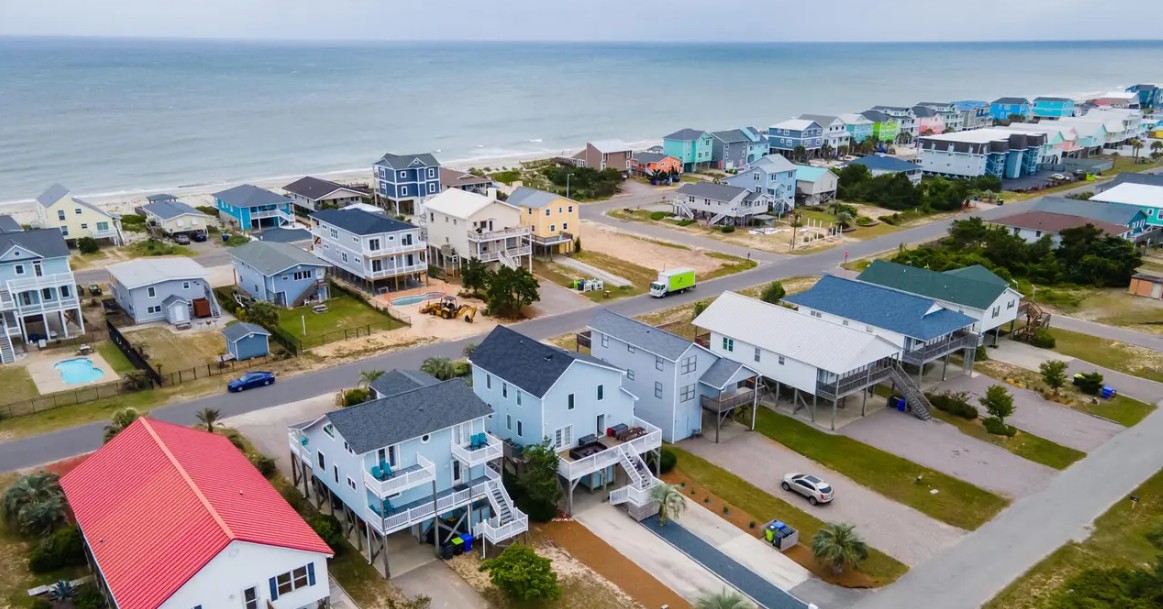
Assess Occupancy Rates
This table displays the occupancy rates of the competitors in the Brunswick County vacation rental market. It provides insights into the booking calendars of each competitor, indicating periods of high and low occupancy. Analyzing occupancy rates helps property owners identify demand patterns and adjust their pricing and availability strategies accordingly.
| Competitor | Occupancy Rate | |
|---|---|---|
| Competitor 1 | 75% (peak) | 40% (off-peak) |
| Competitor 2 | 80% (peak) | 50% (off-peak) |
| Competitor 3 | 60% (peak) | 30% (off-peak) |
Table 3 presents the occupancy rates of the competitors in the Brunswick County vacation rental market. The table indicates the percentage of occupancy during peak seasons and off-peak periods for each competitor. For instance, Competitor 1 experiences 75% occupancy during peak seasons and 40% occupancy during off-peak periods. Similarly, Competitor 2 observes 80% occupancy during peak seasons and 50% occupancy during off-peak periods. Competitor 3 has a slightly lower occupancy rate with 60% during peak seasons and 30% during off-peak periods. Analyzing these occupancy rates enables property owners to understand the demand patterns and adjust their pricing and availability strategies accordingly, aiming to achieve optimal occupancy levels.
Practical Advice for Analyzing Competitors' Occupancy Rates
-
Identify peak and off-peak periods. Study the occupancy rates in Table 3 to identify periods of high demand and low demand throughout the year. Pay close attention to months or seasons with consistently high occupancy rates, as these periods may command higher rental rates. Conversely, identify periods with lower occupancy rates where you may need to adjust pricing or offer promotions to attract more bookings.
-
Use the occupancy data to optimize the availability of your property. Adjust your minimum stay requirements, booking restrictions, and available dates based on the demand trends observed in Table 3. This ensures that your property is accessible to potential guests during high-demand periods while minimizing vacancies during low-demand periods.
-
Consider adjusting your rental rates based on occupancy levels. During periods of high demand and high occupancy rates, you may increase prices to maximize revenue. Conversely, during periods of low demand and low occupancy, you may lower prices to attract more bookings and maintain a steady flow of guests.
-
Utilize the occupancy data to plan targeted marketing campaigns. Focus your marketing efforts on promoting your property during months or seasons with lower occupancy rates to drive more bookings. Tailor your messaging and promotional offers to attract guests during these specific periods and highlight any unique features or experiences your property offers.
-
Compare your property's occupancy rates to those of your competitors. Identify competitors that consistently achieve high occupancy rates and analyze their strategies. Look for patterns or factors contributing to their success, such as marketing tactics, unique amenities, or favorable pricing strategies. Incorporate these insights into your own approach to improve your property's occupancy and overall performance. To gain deeper insights into the intricacies of competitor analysis and discover effective strategies for staying ahead in the competitive landscape of short-term rentals, I encourage you to delve into the comprehensive article titled "Mastering Competitor Analysis in Dynamic Pricing for Short-Term Rentals".
By analyzing the occupancy data presented in Table 3, property owners can make data-driven decisions regarding pricing, availability, and marketing strategies. Understanding demand patterns and optimizing these aspects of their short-term rental business will help maximize occupancy rates, revenue, and overall success in the Brunswick County vacation rental market.
Unveiling Pricing Strategies and Demand Insights
Based on the analysis of the data in Tables 2 and 3, along with considering other market factors, here is some practical advice on which strategy to choose and what price to set (per night) for your short-term rental property in Brunswick County.
- Review the average prices in Table 2 and compare them with the occupancy rates in Table 3. Identify competitors that offer similar accommodations and have high occupancy rates. If your property has similar features and amenities, consider setting your prices slightly below the average prices of these high-performing competitors. For example, if the average price in your area is $150 per night, you could set your price at $140 per night. This strategy aims to attract guests by offering slightly lower rates while still maintaining profitability.
- Observe the seasonal patterns in Table 3, noting months with high demand and high occupancy rates, as well as months with lower demand. Adjust your pricing accordingly to capitalize on peak seasons and maximize revenue. During high-demand periods, you can increase your prices by 10-15% above the average rates to capture the increased willingness of guests to pay more for their desired dates. For example, if the average price during peak season is $180 per night, you could set your price at $200 per night. During off-peak seasons, consider offering discounts or lower rates, such as 10-20% below the average rates, to attract bookings and maintain occupancy.
- Utilize the occupancy rates in Table 3 to implement a dynamic pricing strategy. Adjust your rates based on demand fluctuations, such as increasing prices by 5-10% when the occupancy rate is above 80% and lowering them by 5-15% during periods of lower demand. Dynamic pricing allows you to optimize revenue by aligning your prices with market demand, maximizing occupancy, and adjusting rates in real-time based on factors like seasonality, events, or local demand drivers.
- Consider the amenities and unique features of your property compared to your competitors in Table 2. If your property offers additional value, such as a private pool, breathtaking views, or convenient access to attractions, you can justify setting your prices slightly higher than the average rates. For example, you could set your prices 5-10% higher than the average rates in your area to account for the added value you provide.
- Keep in mind that market conditions and competitor dynamics can change over time. Continuously monitor the performance of your property, track competitors' pricing adjustments, and stay updated on market trends. Regularly assess guest feedback, reviews, and adjust your pricing strategy accordingly. Flexibility and adaptability are key to optimizing your pricing strategy and ensuring competitiveness in the dynamic short-term rental market.
Remember, the specific price per night should be tailored to your property's unique characteristics, market demand, and competitive landscape. These suggested price adjustments are meant to serve as a starting point for your analysis and can be further refined based on your property's specific attributes and the evolving market conditions in Brunswick County. Regularly evaluate and refine your strategy based on market dynamics, guest feedback, and performance indicators.
Analyzing guest reviews
Table 4. Guest Reviews Analyzing
This table presents an analysis of guest reviews for the competitors in the Brunswick County vacation rental market. It highlights the strengths and weaknesses identified by guests, allowing property owners to gain insights into areas where competitors excel and areas where improvements can be made to enhance the guest experience.
| Competitor | Positive Reviews | Areas for Improvement |
|---|---|---|
| Competitor 1 |
|
|
| Competitor 2 |
|
|
| Competitor 3 |
|
|
This table provides an analysis of guest reviews for the competitors in the Brunswick County vacation rental market. It offers valuable insights into the positive aspects highlighted by guests, as well as areas for improvement identified in their feedback. By examining guest reviews, property owners can gain valuable knowledge about what guests appreciate and expect, enabling them to enhance the guest experience and stand out from competitors.
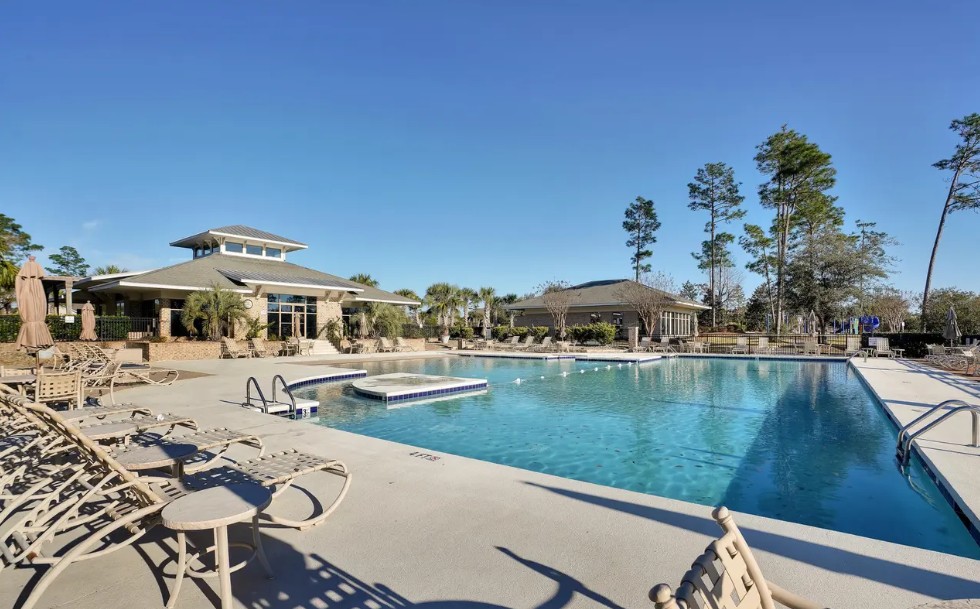
Practical Advice for Analyzing Competitors' Guest Reviews
- Capitalize on positive reviews. Identify the common positive themes mentioned by guests, such as great location, stunning views, cleanliness, responsive customer service, spacious accommodations, or convenient access to local attractions. Emphasize these strengths in your marketing materials and property descriptions to attract potential guests.
- Address areas for improvement. Take note of the areas where competitors receive constructive feedback. For example, if guests mention issues with Wi-Fi connection, parking availability, limited amenities, delayed response to inquiries, or inconsistent cleanliness standards, use this information to improve those aspects in your own property. Prioritize enhancements that can have a significant impact on guest satisfaction.
- Differentiate through attention to detail. Guests appreciate properties that demonstrate attention to detail in decor and furnishings. Use the feedback provided by guests to enhance the overall ambiance of your property. Consider adding special touches like thoughtful amenities, personalized welcome notes, or local recommendations to create a memorable guest experience.
- Streamline check-in process. If competitors receive feedback about the check-in process, take the opportunity to streamline and simplify your own check-in procedures. This can include providing clear instructions, offering self-check-in options, or employing digital solutions to minimize any hassles for guests.
- Address noise concerns. If guests mention noise-related issues caused by neighbors or external factors, ensure you have measures in place to mitigate such disturbances. This can include soundproofing measures, providing earplugs, or offering clear communication to guests about any potential noise sources in the vicinity.
Remember, guest reviews provide valuable insights into the guest experience and can guide property owners in improving their offerings. By utilizing this data effectively, you can make informed decisions to enhance your property, deliver exceptional guest experiences, and ultimately outperform your competitors in the Brunswick County vacation rental market.
Powerful Tips for Maximizing Profits in Short-Term Rentals
After diligently filling in the tables with comprehensive competitor data, we now embark on the crucial step of analyzing the information to derive actionable insights. The gathered data provides us with a deep understanding of the market dynamics and enables us to make informed decisions to boost our short-term rental profits. By examining our competitors' pricing strategies, occupancy rates, and guest reviews, we can gain valuable insights into the competitive landscape and identify areas of opportunity for optimizing our rental performance.
Based on the data in Tables 2, 3, and 4, here are some practical tips to help you increase profits for your short-term rental property:
- Optimize Pricing Strategy.
- Identify competitors with high occupancy rates and slightly lower prices than the average (Table 2). Consider adjusting your prices to be slightly below their rates to attract more bookings while maintaining profitability.
- Utilize dynamic pricing based on occupancy rates (Table 3). Adjust your prices in real-time to maximize revenue during periods of high demand and optimize occupancy during slower periods.
- Enhance Guest Experience.
- Analyze guest reviews and feedback (Table 4) to identify areas where competitors receive positive feedback and areas where they can improve. Use this information to enhance the guest experience at your property, ensuring positive reviews and repeat bookings.
- Focus on amenities and unique features that differentiate your property from competitors (Table 2). Highlight these selling points in your listing and promote them to attract guests willing to pay a premium for unique experiences.
- Efficient Operations and Cost Management.
- Streamline your operations to reduce costs and increase efficiency. Consider outsourcing tasks like cleaning or maintenance to professional service providers, which can lead to time and cost savings.
- Monitor and control expenses related to property maintenance, utilities, and supplies. Look for cost-saving opportunities without compromising the guest experience.
- Strategic Marketing and Promotion.
- Develop a comprehensive marketing strategy to reach your target audience effectively. Utilize online platforms, social media, and local tourism websites to showcase your property's unique features and attract potential guests.
- Offer special promotions and discounts during off-peak seasons or for extended stays. This can help attract guests during slower periods and increase overall occupancy rates.
- Improve Booking Conversion Rate.
- Optimize your property listing by ensuring high-quality photos, accurate descriptions, and compelling content. Use the information gathered from competitor analysis (Tables 2 and 4) to highlight your property's advantages and address any shortcomings identified.
- Respond promptly to guest inquiries and provide exceptional customer service throughout the booking process. Positive interactions and timely communication can increase the likelihood of securing bookings.
- Guest Loyalty and Repeat Bookings.
- Implement a guest loyalty program or offer incentives for repeat bookings. Encourage guests to leave reviews and referrals by providing exceptional experiences and personalized touches during their stay.
- Develop partnerships with local businesses or attractions to offer exclusive discounts or packages for your guests, enhancing their overall experience and encouraging them to return.
Remember, these are general guidelines based on the data provided. It's essential to continuously monitor market trends, adapt your strategies, and stay competitive in the dynamic short-term rental industry. Regularly review your performance, gather guest feedback, and adjust your approach accordingly to maximize profits and achieve long-term success.
Conclusion. By conducting a comprehensive competitor analysis in Brunswick County, short-term rental owners can make informed decisions regarding dynamic pricing, setting optimal rental prices, and establishing a price corridor. Based on the analysis of the gathered data, it is recommended to set the price corridor between $150 and $200 per night, considering factors such as seasonality, occupancy rates, and unique selling points. This approach ensures competitiveness while maximizing profitability.
Remember, competitor analysis is an ongoing process, and it's crucial to continuously monitor the market, adapt pricing strategies, and differentiate your property to stay ahead of the competition. By leveraging dynamic pricing and applying the insights gained from competitor analysis, short-term rental owners in Brunswick County can unlock the secrets to market success and achieve optimal rental performance.
For a more in-depth understanding and practical implementation of competitor analysis with dynamic pricing, refer to the full article "Competitor Analysis with Dynamic Pricing for Short-Term Rentals" available on our website.
Disclaimer! The competitor analysis presented in this article provides insights based on data collected at the time of the analysis. It is important to note that the vacation rental market is dynamic, and the pricing and performance of competitors can change over time. Therefore, it is essential to conduct regular and ongoing competitor analysis to stay up-to-date with the latest market trends and adjust pricing strategies accordingly. The information and calculations provided in this article are intended for informational purposes only and may not reflect the current or future state of the market.
As we transition from data collection to analysis, armed with the insights gained from our competitor analysis, we can now make strategic decisions to enhance our short-term rental business. The combination of comprehensive market data, pricing strategies, occupancy rates, and guest reviews empowers us to refine our pricing models, optimize our rental performance, and ultimately drive higher profitability in the competitive short-term rental market.
Sincerely,
William Anderson
Profit Dwelling
To discover a range of strategies to maximize profits from short-term rentals, refer to the "Optimize Rental Pricing" section for detailed insights and actionable recommendations.
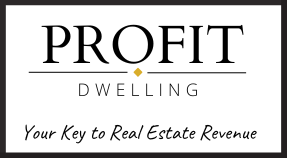
Comments powered by CComment